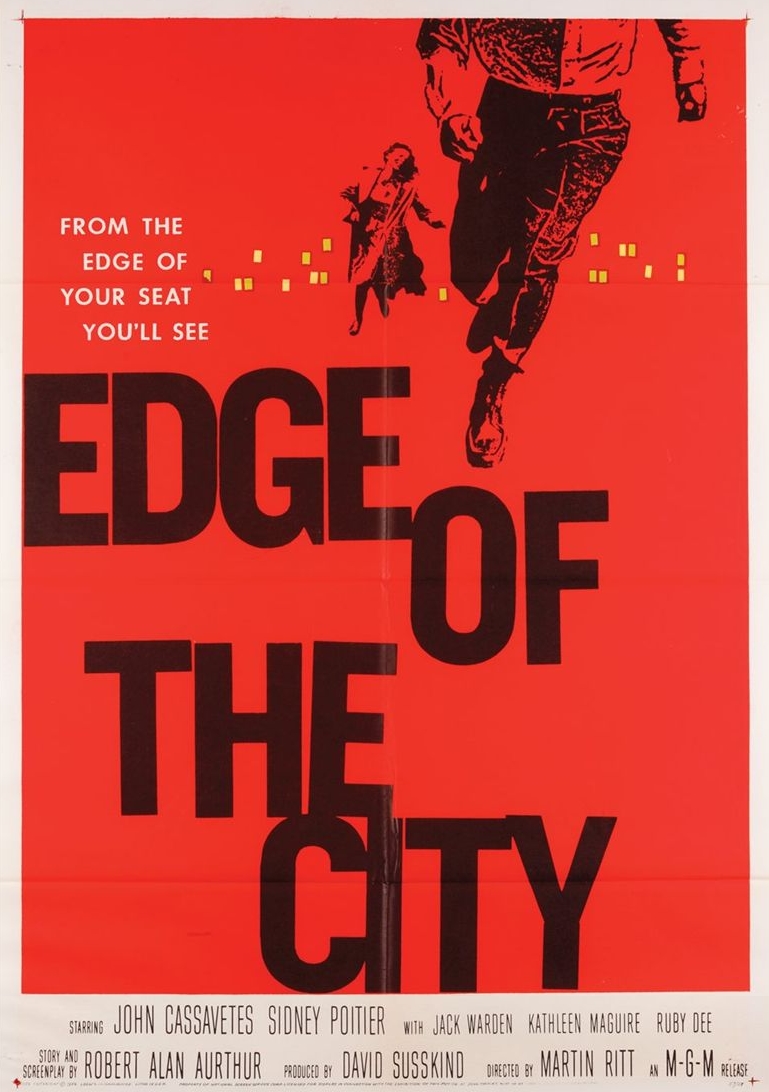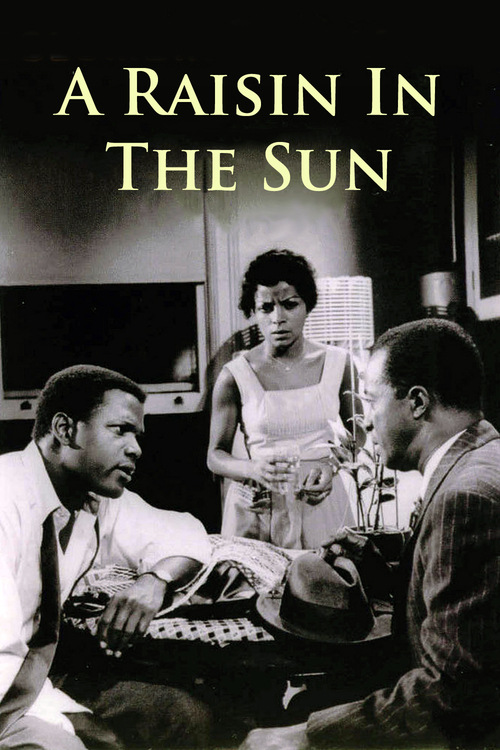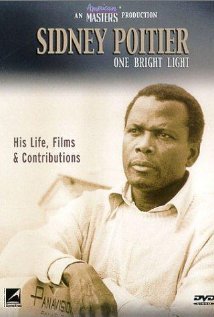There are some celebrities who, by virtue of what they represent and contribute beyond their talent, become something more than simply what their chosen profession would indicate. Such a man is Sidney Poitier, the first African-American to win a Best Actor Oscar.
An authentic pioneer, with each scene he played on-screen he seemed to shatter age-old stereotypes about his race. And thus, simply by inhabiting his characters, he advanced the cause of civil rights just as surely as the courageous agitators and activists on the front lines.
Before Poitier, however, the notion of a black movie star was not only unlikely; it was unthinkable. Mirroring the times, until the 1960s black roles in mainstream films were largely confined to servants, layabouts and buffoons. But when Sidney hit the screen, suddenly America was confronted with a black man exuding nobility, strength, intelligence, and humility — in short, black pride long before the term was coined. Never with a chip on his shoulder, never self-pitying, he commanded attention and respect, showing anger only when provoked by others’ ignorance.
To experience this again first-hand, watch “Sidney Poitier: One Bright Light” (2000), a touching and highly personal documentary of the man. In “Light” you learn quickly that the actor’s ability to convey at once an essential goodness and strength on-screen comes from the simple fact that this is who the man really is.

The son of a dirt farmer in the Bahamas, young Sidney grew up in virtual poverty. His initial arrival in the States brought only more hardship, as he was forced to sleep in rest rooms and nearly froze one harsh New York winter without an overcoat. The idea of acting first came as an arbitrary opportunity, but a slew of initial rejections, and a suspicion he might actually have talent, caused Sidney to buckle down and work, losing his heavy Caribbean accent, and learning his craft.
He was finally cast in Joseph L. Mankiewicz’s “No Way Out” (1950), lying to the director about his age to get the part (he was just 22). He would continue building his career through the mid-fifties in titles like “Cry, The Beloved Country” and “The Blackboard Jungle.” Of course, the idea of achieving actual stardom seemed unattainable, since there had never been an African-American leading man in Hollywood.
All this would change in 1958, when maverick producer/director Stanley Kramer cast Poitier opposite Tony Curtis in “The Defiant Ones,” a gripping tale of two escaped convicts manacled together — one a racist, one black. Poitier more than holds his own with Curtis, then a big star. Finally, at the age of 30, the actor’s name would start going above the title. Virtually simultaneous with the rise of the civil rights movement, Sidney Poitier was set to go where no black actor had gone before.

Daniel Petrie’s “A Raisin In The Sun” (1961), based on Lorraine Hansberry’s play, provided an ideal star vehicle for his explosive talent. Sidney portrays a proud but frustrated young man counting on his mother’s small nest egg to let him invest in a business that could lift his family out of their dead-end existence. Poitier projects barely suppressed rage as he pleads with a resolute matriarch who wants to use the money to buy a new home. See this deeply moving piece for Sidney’s intense performance, and for Claudia McNeil’s equally impressive turn as his mother. (Notably, both had originated their roles on Broadway.)
A gentle and charming change-of-pace followed: “Lilies Of The Field” (1963), in which Poitier plays Homer Smith, a handyman who finds himself helping a group of nuns build a chapel. In the process, he learns something about the meaning of human charity and the power of God’s will, as exercised through His most faithful followers. Sidney’s pure, heartfelt performance in “Lilies” would win him that groundbreaking Oscar for Best Actor.
In 1965, Poitier starred in “A Patch Of Blue,” a parable about the power and meaning of friendship. Strolling in the park one day, a man of color strikes up a conversation with a neglected, blind white girl (Elizabeth Hartman), and ultimately decides to see to her welfare. Leisurely paced and simply told, the film is worth sticking with, as uniformly fine performances carry the audience through to a satisfying finish. (Actress Shelley Winters would take home an Oscar that year for her unsympathetic turn as the girl’s racist, harridan mother.)
That same year, the actor re-teamed with Richard Widmark (who’d worked with him fifteen years earlier in “No Way Out”) in a tense Cold War thriller called “The Bedford Incident.” Widmark is a hardened, aggressive naval commander playing cat-and-mouse with a Russian submarine off the coast of Greenland, Poitier the astute journalist covering the maneuvers with increasing uneasiness. The result is a taut, no frills psychological drama.

Notwithstanding his Oscar four years earlier, 1967 was Sidney Poitier’s year. First, he scored as a determined teacher out of his element in a tough London high school in “To Sir, With Love.” Initially facing apathy and resistance from his students, by the end of “Sir,” he has transformed his unruly charges into hopeful (and grateful) young people, and we the audience buy it, because we’ve been transformed right along with them.
Next came “In The Heat Of The Night,” with Sidney in full glory as Detective Virgil Tibbs, a San Francisco police officer who ends up in the wrong place (the Deep South), at the wrong time (a murder has just been committed). Set up against a bigoted, wily sheriff (Rod Steiger), Poitier must unravel the mystery alone while watching his back in hostile territory. “Heat” deservedly netted the Oscars in the top categories that year- for Best Picture, Actor (Steiger), Screenplay, and Editing. And though Steiger won the big prize, it was — and remains — just as much Poitier’s movie.
The succeeding decades would find the actor taking fewer roles and branching out into directing comedies (notably, “Uptown Saturday Night” and “Let’s Do It Again” co-starring Bill Cosby, and “Hanky Panky,” with Gene Wilder and Richard Pryor). Though his acting output would shrink during this period, it was still evident he could deliver the goods with the right material.
The best example is a 1991 film that should be required viewing for all Americans: “Separate But Equal.” Originally a TV movie aired in two parts, this is the vivid recounting of events leading up to the Supreme Court’s 1954 landmark ruling on school desegregation. Poitier stars as Thurgood Marshall, the future Supreme Court Justice who was, at the time, lead attorney for the struggling, under-manned N.A.A.C.P. Featuring a memorable supporting performance by Richard Kiley as Chief Justice Earl Warren, “Separate” is an invaluable rendering of an historic, proud moment in our country’s evolution. Predictably, this subtle, seasoned actor does Mr. Marshall proud.
Starting out with virtually nothing, Sidney Poitier worked relentlessly to become a superb actor, in the process becoming a star through grit, courage and daring. To me, and to countless others of all colors and creeds, he is also something more important: an authentic hero.



